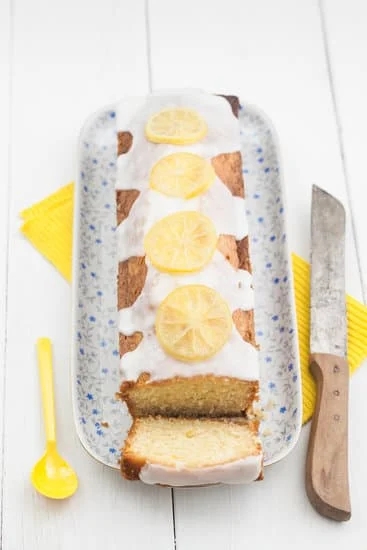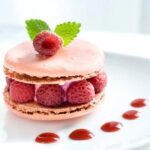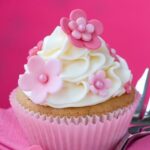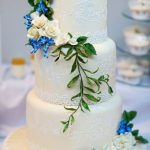When it comes to creating a visually stunning cake, decoration plays a crucial role in enhancing its appearance and making it memorable. The art of cake decoration involves using various elements to transform a plain dessert into a work of edible art. From frostings to piping techniques, edible decorations to non-edible embellishments, the possibilities are endless when it comes to adorning a cake.
One of the key components used to decorate a cake is frosting. Frosting not only adds flavor but also serves as a canvas for creative designs and decorations. Common types of frosting include buttercream, royal icing, fondant, and ganache, each offering unique textures and applications in cake decoration. Whether smooth and creamy or intricate and detailed, the type of frosting you choose can greatly impact the overall look of your cake.
In addition to frosting, piping techniques play a significant role in achieving intricate designs and patterns on cakes. From delicate scrollwork to elaborate floral arrangements, mastering different piping techniques can elevate the aesthetic appeal of your creations. Furthermore, edible decorations like sprinkles, sugar flowers, edible glitter, and chocolate decorations offer an extra layer of visual interest to cakes, adding depth and complexity to their design.
Types of Frosting
One of the key elements in cake decoration is the type of frosting used to cover and embellish the cake. Different frostings not only provide a unique flavor profile but also offer varying textures and finishes to suit different aesthetics. One of the most popular types of frosting is buttercream, which is made from butter, powdered sugar, and flavorings like vanilla extract. Buttercream can be easily colored, piped into intricate designs, or smoothed over a cake for a classic finish.
Royal icing is another common frosting used in cake decorating, especially for intricate designs like lacework or delicate flowers. Made from powdered sugar, egg whites, and sometimes lemon juice or cream of tartar, royal icing hardens as it dries, making it ideal for creating dimensional decorations that can stand upright on a cake.
Fondant is a smooth and pliable icing that can be rolled out into thin sheets to cover cakes with a flawless finish. It is often used for wedding cakes or specialty cakes where a polished look is desired.
Ganache is a luxurious frosting made from chocolate and heavy cream that adds richness and decadence to any cake. With its shiny finish and luscious texture, ganache is perfect for drizzling over cakes for an elegant touch or creating smooth chocolate coatings on desserts. Each type of frosting offers its own unique qualities and application techniques, allowing bakers to experiment with different styles and achieve their desired decorative effects.
Enhancing Cake Decorations With Flavors
In addition to providing visual appeal, frostings also contribute to the overall taste of the cake. Buttercream can be flavored with various extracts like almond or citrus to add depth to the sweetness, while ganache can incorporate liqueurs or espresso for an intense flavor twist. Fondant can be infused with different flavors like coconut or raspberry to complement the cake layers underneath. Experimenting with flavor combinations when choosing a frosting can elevate the entire eating experience of a decorated cake.
Choosing the Right Frosting for Your Design
When deciding on which type of frosting to use for decorating a cake, it’s essential to consider factors such as the design aesthetic you want to achieve, the weather conditions (as some frostings are sensitive to heat or humidity), and the flavor profile that will best complement your cake recipe.
Whether you opt for buttercream’s creamy sweetness, royal icing’s delicate artistry, fondant’s sleek appearance, or ganache’s indulgent decadence will depend on your personal preferences and creative vision for the final product.
Ultimately, selecting the right frosting is instrumental in bringing your cake decoration ideas to life and delighting both eyes and taste buds alike.
Piping Techniques
Another commonly used piping technique is royal icing piping, which involves using a blend of powdered sugar and egg whites to create intricate details and decorations on cakes. Royal icing can be piped into delicate flowers, intricate borders, or elaborate lace patterns, making it a versatile choice for decorative work. Additionally, fondant can also be shaped and molded into different decorations using piping techniques like embossing or quilting.
For those looking to add a touch of elegance to their cakes, pearl piping is a popular technique that involves creating small pearls using royal icing or buttercream and arranging them in borders or clusters on the cake. This technique adds a sophisticated touch to any cake design and can be used to accentuate other elements like flowers or figurines.
No matter what style or theme you’re going for with your cake decoration, mastering different piping techniques can take your creations to the next level.
| Cake Decoration Techniques | Description |
|---|---|
| Buttercream Piping | Using buttercream frosting and various tips to create textures and designs on cakes. |
| Royal Icing Piping | Using a mix of powdered sugar and egg whites for intricate details like flowers, borders, and lace patterns. |
| Pearl Piping | Creating small pearls with royal icing or buttercream to enhance the overall design of the cake. |
Edible Decorations
Another delightful edible decoration is edible glitter, which adds a touch of sparkle and glamour to cakes. Edible glitter comes in various forms such as dust, flakes, or sparkles, and can be used to create a dazzling effect on cakes for special occasions like weddings or birthdays.
Moreover, sugar flowers are a timeless choice for cake decoration that can be crafted into intricate designs resembling real flowers. These delicate decorations not only look stunning but also offer a sweet floral flavor that complements the cake.
In addition to sprinkles, edible glitter, and sugar flowers, chocolate decorations are another popular choice for embellishing cakes. Whether it’s chocolate curls, shards, ganache drips, or molded shapes, chocolate adds rich flavor and elegant aesthetics to cakes.
By using high-quality chocolate and mastering different techniques like tempering and molding, you can create exquisite chocolate decorations that will impress your guests. The possibilities are endless when it comes to using edible decorations creatively to adorn cakes and transform them into delectable works of art.
Non-Edible Decorations
When it comes to decorating a cake, non-edible decorations play a significant role in adding that extra touch of elegance and personalization. Ribbons are a popular choice for enhancing the look of cakes, whether it’s a simple satin ribbon wrapped around the base of a tiered cake or intricate bow designs adorning the top.
Fresh flowers are another beautiful option for cake decoration, adding a touch of natural beauty and freshness. From delicate blooms like roses and peonies to vibrant petals like sunflowers and daisies, fresh flowers can elevate the aesthetic appeal of any cake.
Cake toppers and figurines are also versatile non-edible decorations that can be used to customize cakes for various occasions. Whether it’s a classic bride and groom topper for weddings or themed figurines for birthdays and celebrations, these decorations add a personal touch to the cake design.
Cake toppers come in a variety of styles, including traditional monograms, whimsical designs, and customized options based on specific themes or interests. Figurines, on the other hand, range from cartoon characters and animals to seasonal motifs like pumpkins or snowflakes, allowing for endless creativity when adorning cakes.
Incorporating non-edible decorations into cake designs not only enhances the visual appeal but also allows for customization based on the occasion or recipient’s preferences. From elegant ribbons and fresh flowers to playful cake toppers and figurines, these elements offer endless possibilities for creating unique and memorable cakes that truly stand out.
When combined with other decorative elements like frosting techniques and edible adornments, non-edible decorations contribute to creating stunning masterpieces that leave a lasting impression on anyone who beholds them.
Tools and Equipment
Cake decoration is both an art form and a science, requiring the right tools and equipment to achieve stunning results. Whether you are a seasoned baker or just starting out, having the essential supplies on hand can make all the difference in creating beautifully decorated cakes. Here is a list of must-have tools and equipment for cake decoration:
- Piping bags: These disposable or reusable bags are essential for piping frosting onto cakes in various designs and patterns.
- Tips: Different piping tips can create different effects, from intricate flowers to smooth lines. A variety pack with different shapes and sizes is ideal for versatility.
- Spatulas: Offset spatulas are perfect for spreading frosting evenly on cakes, while straight spatulas can be used for more precise decorating.
- Molds: Silicone molds come in handy for creating fondant decorations like flowers, leaves, and other intricate details to adorn your cakes.
- Stencils: Stencils are great for adding decorative patterns or borders to your cakes with either powdered sugar or cocoa powder.
Having the right tools at your disposal can help you bring your creative cake decorating ideas to life. From intricate piping work to delicate fondant details, each tool serves a specific purpose in achieving the desired look for your cake. Experimenting with these tools and practicing different techniques will help you hone your skills and take your cake decorating to the next level.
Whether you are a hobby baker or a professional pastry chef, investing in quality tools and equipment will set you up for success in the world of cake decoration. With the right supplies at hand, you can explore endless possibilities in design and innovation. So next time you embark on a cake decorating project, make sure you have your piping bags, tips, spatulas, molds, and stencils ready to unleash your creativity on that blank canvas of a cake.
Tips and Tricks
Cake decoration is an essential aspect of creating visually appealing and delicious cakes. To achieve professional-looking cake decorations, beginners can benefit from a few helpful tips and tricks. One key consideration is the proper storage of decorations to maintain their quality and appearance. Edible decorations such as fondant pieces, sugar flowers, and chocolate decorations should be stored in a cool, dry place away from direct sunlight to prevent melting or discoloration.
Another important tip for beginners is to troubleshoot common issues that may arise during the cake decorating process. For example, if buttercream frosting becomes too soft or runny, placing it in the refrigerator for a few minutes can help firm it up for easier piping. Additionally, using the right consistency of frosting for different decorating techniques can make a significant difference in the outcome of the cake design.
When working on intricate designs or patterns with piping techniques, beginners should practice consistency in pressure and movement to create smooth and even lines. It’s also essential to invest in quality tools and equipment such as piping bags, tips, spatulas, molds, and stencils to achieve precise and professional results in cake decoration. By following these tips and tricks, beginners can enhance their skills and create beautifully decorated cakes that are sure to impress any audience.
| Key Tips for Beginners | Storage Tips |
|---|---|
| Practice consistency in piping techniques | Store edible decorations in a cool, dry place |
| Use the right consistency of frosting for different techniques | Avoid direct sunlight exposure for decorations |
| Invest in quality tools and equipment for precise results | Maintain buttercream frosting firmness by refrigerating when needed |
Trends in Cake Decoration
Cake decoration is an essential aspect of baking that allows bakers to showcase their creativity and artistry. As trends in cake decoration evolve, new styles and techniques emerge, adding excitement and innovation to the world of baking. From minimalist naked cakes to stunning mirror glaze creations, the possibilities for decorating cakes are endless. Let’s take a closer look at some of the current trends in cake decoration that are captivating both bakers and cake enthusiasts alike.
Some popular trends in cake decoration include naked cakes, which feature exposed layers of cake with minimal frosting on the outside. These rustic-style cakes have gained popularity for their simple yet elegant appearance, allowing the natural beauty of the cake layers to shine through. Naked cakes are often adorned with fresh flowers, berries, or drizzles of caramel or chocolate for added visual appeal.
Drip cakes have also become a trendy choice for celebrations, featuring decadent drips of ganache, caramel, or colorful icing cascading down the sides of the cake. The dripping effect adds a touch of whimsy and indulgence to the cake, creating a visually striking presentation that is perfect for special occasions. Drip cakes can be customized with various flavors and colors to suit different themes and preferences.
- Naked Cakes: Exposed layers of cake with minimal frosting
- Drip Cakes: Decadent drips of ganache, caramel, or icing
- Geode Cakes: Stunning crystal-inspired designs using rock candy or edible gems
- Mirror Glaze Cakes: Shiny glaze finishes that create a mirror-like effect on the surface
Geode cakes have captured the attention of many with their mesmerizing crystal-inspired designs made using rock candy or edible gems. These intricate cakes feature geode formations that look like real crystals embedded within the cake layers. Geode cakes offer a unique blend of artistry and gastronomy, making them an impressive centerpiece for any event.
Lastly, mirror glaze cakes have taken the baking world by storm with their glossy finishes that create a mirror-like effect on the surface of the cake. The smooth and reflective glaze adds a touch of sophistication and modernity to traditional baked goods, turning them into works of edible art. Mirror glaze cakes can be customized with vibrant colors and marbled patterns to achieve eye-catching results that are sure to dazzle any crowd.
Conclusion
In conclusion, cake decoration plays a vital role in elevating the visual appeal of a cake and making it truly special for any occasion. From different types of frosting to piping techniques, edible decorations, and non-edible embellishments, there is a wide array of elements that can be used to decorate a cake.
Whether it’s creating intricate designs with buttercream frosting or adding edible glitter for a touch of sparkle, the options are endless when it comes to decorating cakes.
One of the most exciting aspects of cake decoration is the variety of tools and equipment available to help bring creative visions to life. Piping bags, tips, molds, stencils – these tools enable decorators to experiment with different techniques and achieve professional-looking results. Additionally, staying updated on current trends in cake decoration allows for further exploration and innovation in the field.
Ultimately, what is used to decorate a cake goes beyond just enhancing its appearance; it adds a personal touch and conveys emotions through artful design. Whether following traditional methods or embracing modern trends like naked cakes or mirror glaze cakes, there are endless creative possibilities when it comes to decorating cakes. So next time you’re preparing for a special celebration, don’t forget to consider how you can use various methods to make your cake truly unforgettable.
Frequently Asked Questions
What Do You Decorate a Cake With?
Cakes are typically decorated with a variety of toppings and frostings such as buttercream, fondant, royal icing, fresh fruit, chocolate ganache, edible flowers, sprinkles, and decorative piping. These elements not only enhance the appearance of the cake but also add flavor and texture.
What Tool Is Used to Decorate Cakes?
A common tool used to decorate cakes is a piping bag fitted with various tips that allow for different designs and patterns to be created on the surface of the cake. Other tools include offset spatulas for smooth frosting application, stencils for intricate designs, molds for creating shapes, and brushes for painting on details.
What Ingredient to Decorate Cake?
Ingredients commonly used to decorate cakes include food coloring to tint frosting or fondant in different shades, edible glitter or dust for a shimmering effect, various extracts such as vanilla or almond for flavoring, and sugar decorations like pearls or crystals. These ingredients offer endless possibilities for customizing cakes to suit any occasion or theme.

Welcome to our cake decorating blog! My name is Destiny Flores, and I am the proud owner of a cake decorating business named Cake Karma. Our mission is to provide delicious, beautiful cakes for all occasions. We specialize in creating custom cakes that are tailored specifically to each customer’s individual needs and tastes.





